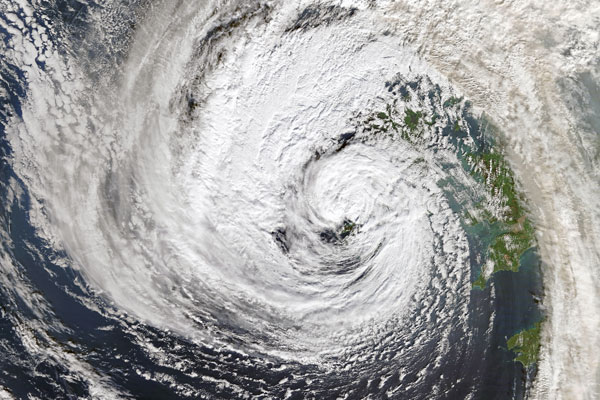Hurricane Proof Your HVAC System

3 Steps to Hurricane Proof Your HVAC System
During the summer months, the waters of the South Atlantic warm up each year. When the surface temperature of the water rises above 790 degrees, a combination of evaporation and heat energy forms terrific tropical storms. The most severe of these storms are called hurricanes, which can cause tremendous damage when they land near your home and your HVAC System.
Since measurable parameters generate tropical storms and hurricanes, the potential for severe storms is generally predictable, although the direction, intensity, and landfall location have too many variables to predict specifically. Meteorologists track these storms as they move from east to west, giving blow-by-blow reports of movement and intensity changes.
The history of previous storms, predictions of present dangers, and movement reports of existing storms provide enough information for coastal homeowners in the path of the storm a few days’ notice to prepare for the coming chaos.
Various agencies and utilities prepare a list of preparation steps to remind homeowners of possible scenarios that might occur. General steps include:
- Purchasing/storing water and ready-to-eat meals
- Planning an evacuation route
- Preparing window coverings for strong winds
Long-term preparation includes:
- Installing a whole-house generator to provide power and protect the home
- Installing a whole-house surge protection
- Removing limbs and trees that might threaten the home or property
In addition, steps to protect your air conditioner system also abound. These HVAC System hurricane preparedness steps include:
Hurricane Proof Your HVAC System Step 1
Protecting the condenser unit from high winds. The outdoor air conditioner component is called the condenser, the most vulnerable part of the system. The condenser looks like it must be heavy, but it is hollow and made of lightweight material. When hurricane-force winds arrive, the condenser can easily be carried away. For this reason, preparedness plans recommend installing straps to secure the condenser to the concrete pad beneath.
The condenser is also vulnerable to wind-blown debris; even small items traveling at more than 100 mph can damage the fins and tubes that make up the sides of the unit.
Hurricane Proof Your HVAC System Step 2
Protecting the air conditioner from lightning strikes. A lightning strike can send 300 million to 30 thousand volts of electricity into a home wiring system designed to handle 120 volts. The severity of the power surge is determined by the intensity and proximity of the strike, but even a mild strike will severely damage a home’s system. For this reason, preparedness guidelines call for homeowners to shut off power to their homes, whether the family evacuates or not.
Hurricane Proof Your HVAC System Step 3
Inspect the system before restoring power. Investigate the aftermath of the storm.
- Watch for downed powerlines and do not approach them. Remember, the ground is wet, and water is a ready conductor of electricity.
- Remove any cover used to protect the unit. It needs lots of air movement to prevent overheating.
- Inspect the condenser unit and do not restore power to a damaged unit.
- If you suspect a problem or want a second opinion, call a factory-trained Trane technician to thoroughly inspect your air conditioner after a storm.
Hurricane Proof Your HVAC System
To find a local Trane HVAC Repair technician to Hurricane Proof Your HVAC System, visit our Local Dealer search tool.